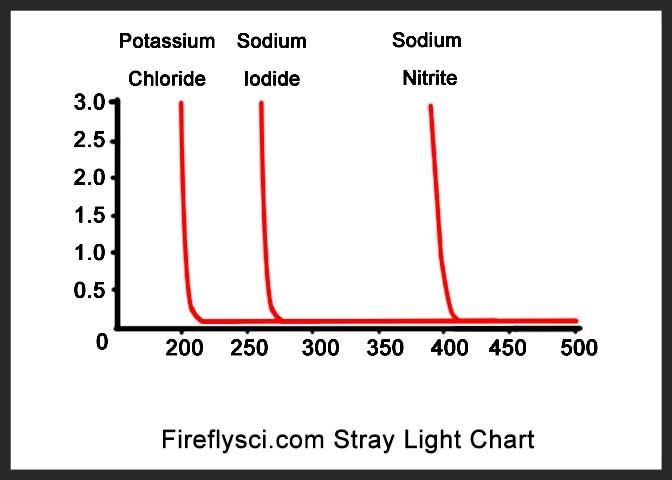What is Stray Light and How to Test for it
/An often overlooked part of having a properly calibrated spectrophotometer is stray light. The presence of stray light is actually one of the most critical specifications for a spectrophotometer. In this article, we’re going to cover what is stray light and how to test for it in a spectrophotometer.
What is Stray Light?
First, we’ll start with defining what stray light is and why it is problematic. In theory, when light is emitted from the spectrophotometer’s monochromator, say at 465 nm, only light from the 465 nm bandwidth should reach the detector once it passes through the cuvette chamber. In a perfect world, 100% of the 465 nm light sent from the light source would be received by the detector and no other light from a different bandwidth would be present. Now since we don’t live in a perfect world there is light that is sent out from other bandwidths and this is what makes stray light.
Stray light can be caused by diffraction, light scattering, or the machine may need to be repaired. All spectrophotometers have stray light. Higher end models will have less stray light, but no machine is perfect.
Stray light can be an issue throughout the entire spectral range of a spectrophotometer, which includes the UV, VIS and NIR ranges. Stray light becomes more of an issue as you approach the UV range (190-300 nm). So if you do a lot of work in the UV, checking your spectrophotometers stray light is a necessity.
Stray light will not correct itself and will get worse over time. So if you haven’t checked the stray light in your machine, now is the time to do so.
Stray Light Testing Methods
There are a few different methods of testing stray light. One older method involves using etched nickel screens. This method had some issues because reproducibility depended on how well you could position the screens in the cuvette chamber.
Liquid calibration standards were later designed to test for stray light which greatly increased the consistency of the results. These liquid stray light filters are still in use today and are recommended by many organizations such as European Pharmacopeia.
Solid-state calibration filters are the latest addition to testing stray light. The benefit of the solid-state filters is that they have the repeatability of the liquid filters and there are no dangerous chemicals to deal with.
Liquid Stray Light Calibration Filters
Liquid stray light filters are also called cut-off filters. This is because these filters have sharp transmission drop-offs, a.k.a cut-offs, and you see the transmission drop to almost zero. Please see the chart below.
There are three different chemicals that are used to test stray light in a spectrophotometer.
- Potassium Chloride Cut-off 200 nm
- Sodium Iodide Cut-off 220 nm
- Sodium Nitrite Cut-off 390 nm
Solid Stray Light Calibration Filters
Now comes the good stuff. For years the liquid filters have ruled the stray light market. However, now there are solid-state stray light filters that can test for stray light at almost any wavelength.
The simplest stray light testing filter would be one of the FUV Dual Series filters. This dual-purpose filter can calibrate for both photometric accuracy and stray light at any wavelength from 200 nm up to 700 nm. This covers both your UV and VIS range.
You can see this filter in action in the video below.
That’s all for now, if you have any questions please leave them in the comments below or send us an e-mail, info@fireflysci.com.
Here’s to your success!
Simcha Woitovich
![firefly_logo_FINAL [Black].jpg](https://images.squarespace-cdn.com/content/v1/5411d5c0e4b02e1c8b27565a/1434491508803-XB4OF7YDY46Z72L5U5AP/firefly_logo_FINAL+%5BBlack%5D.jpg)






